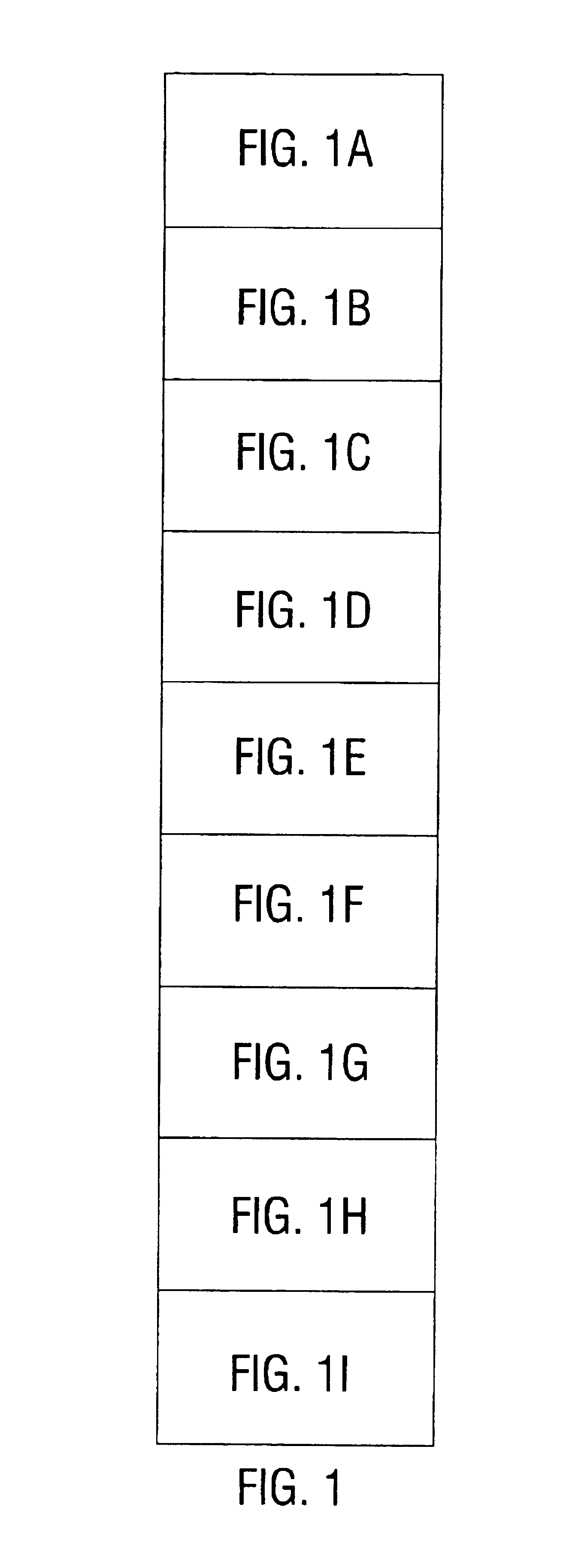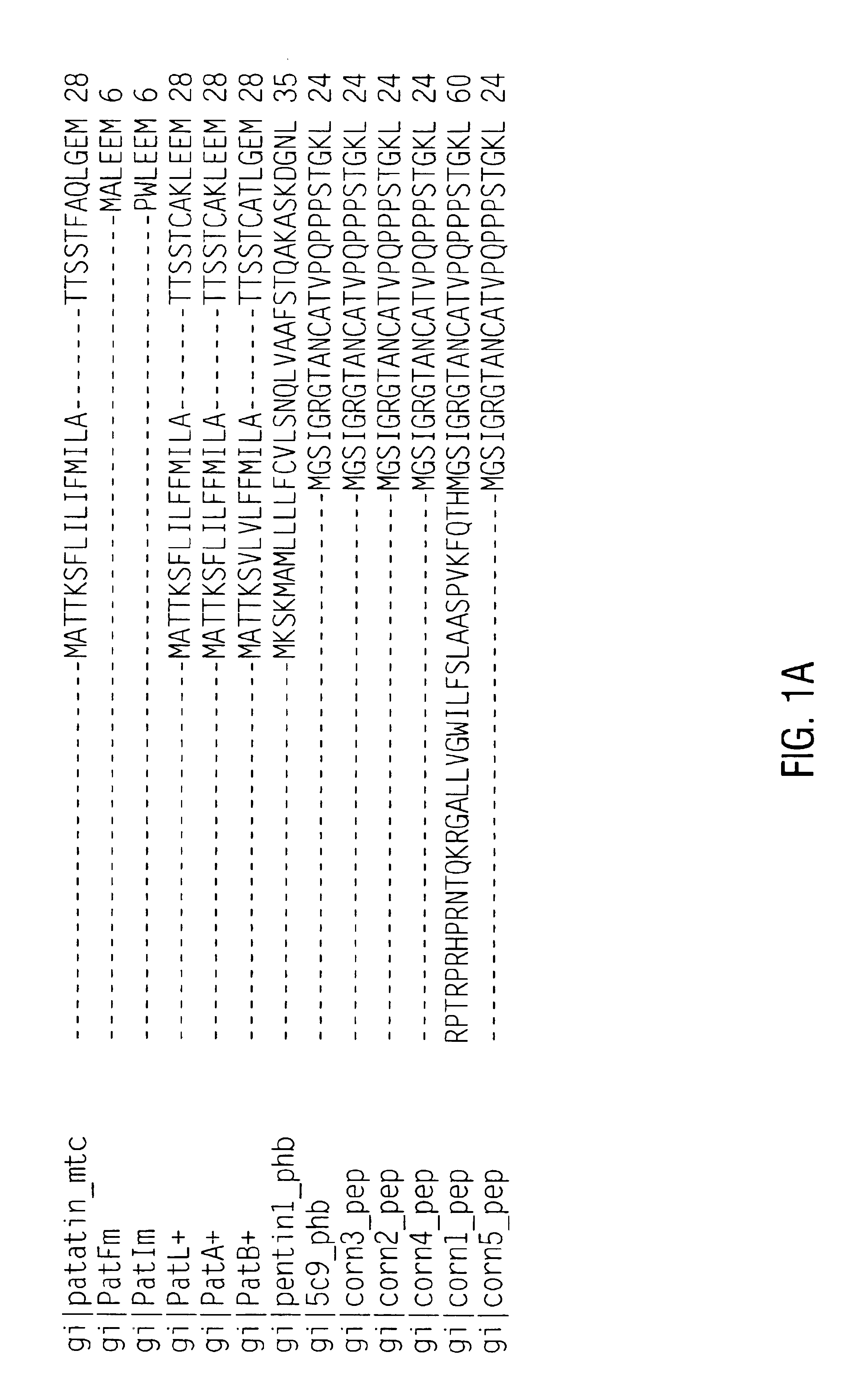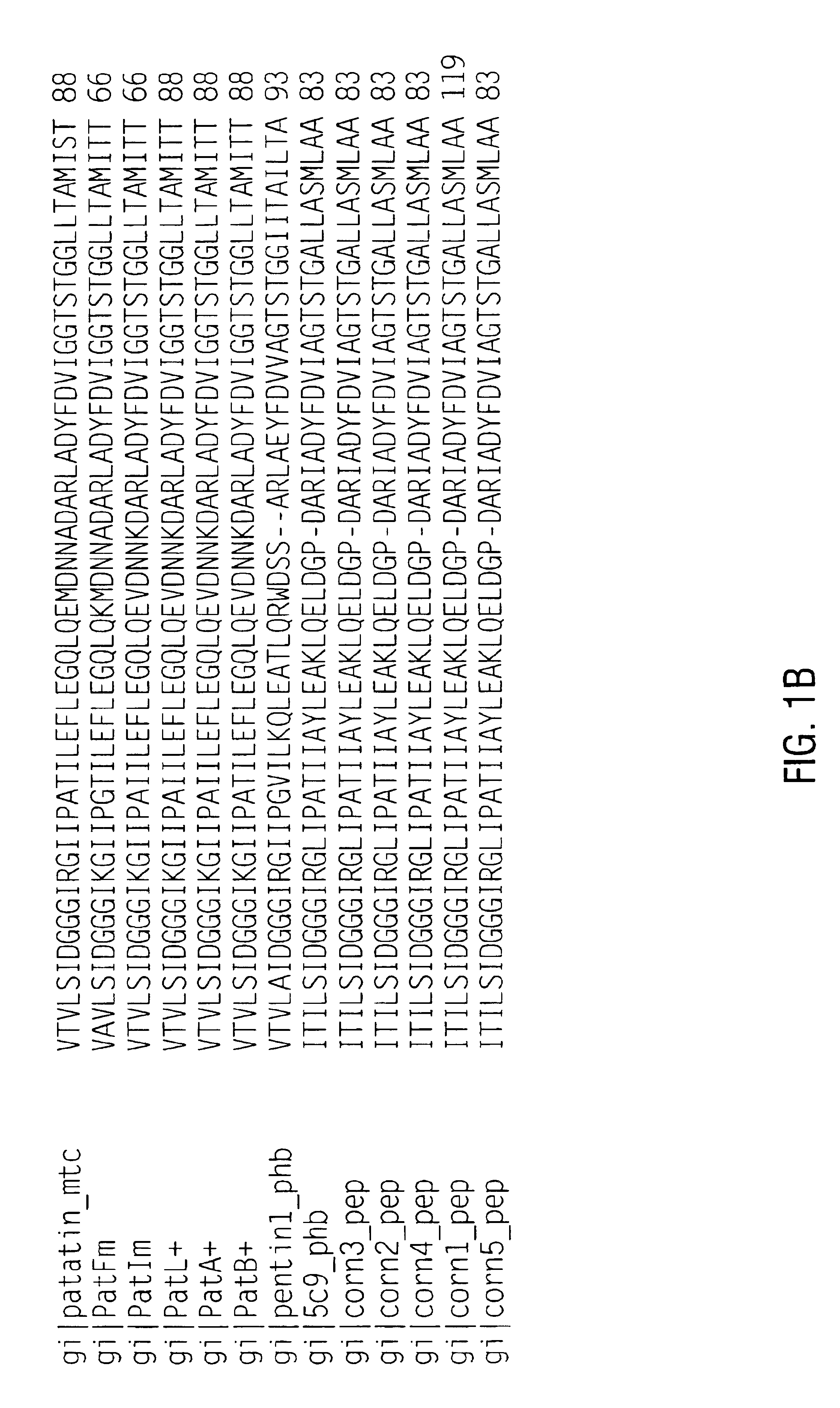Preparation of deallergenized proteins and permuteins
a technology of deallergenized proteins and permuteins, which is applied in the field of nonnaturally occurring novel proteins, can solve the problems of inability to reproduce, potato allergic subjects may not be able to safely consume products containing unmodified patatin proteins, and the proliferation of food allergens in the food supply, so as to achieve desirable enzymatic and insecticidal properties, reduce or eliminate allergenicity
- Summary
- Abstract
- Description
- Claims
- Application Information
AI Technical Summary
Benefits of technology
Problems solved by technology
Method used
Image
Examples
example 1
Identification of Patatin as an Allergen
[0187]Since patatin is commonly obtained from an allergenic source (potato), it was hypothesized that patatins in fact encode an important class of offending potato allergens (patatin was reported as allergenic by Seppala, U. et al., J. Allergy Clin. Immunol. 103: 165-171, 1999). Assessment of potential allergens preferably include appropriate in vitro testing for IgE binding, in this case with potato allergic sera (Fuchs, R. L. and Astwood, J. D., Food Technology, 50: 83-88, 1996; Astwood, J. D., et al., Monographs in allergy Vol. 32: Highlights in food allergy, pp. 105-120, 1996, Metcalfe, D. D., et al., Critical Reviews in Food Science and Nutrition, 36S: 165-186, 1996). It is the recommendation of a working group organized by the IFBC and the ILSI Allergy and Immunology Institute that proteins encoded by nucleic acid sequences from allergenic sources such as potato (a “less-commonly” allergenic source) should be examined for their ability ...
example 2
Western Blotting of Patatin Proteins
[0192]Western blotting experiments were performed using patatin protein purified to near homogeneity from corn plants genetically engineered to produce patatin, patatin producing crude genetically engineered corn leaf extracts, crude potato tuber extracts, and non-transgenic corn leaf samples.
[0193]Protein samples were electrophoresed by SDS-PAGE (Laemmli, U. K., Nature 227: 680-685, 1970) and were electroblotted onto nitrocellulose. Protein blots were processed by standard Western blotting (immunoblotting) techniques and were incubated in potato allergic serum diluted 1:5 in PBS buffer for 1 hour. After washing the blots 3 times with PBS, the blots were incubated in biotinylated anti-IgE (Johns Hopkins Hospital, Baltimore, Md.) for 1 hour, followed by a 30 minute incubation in HRP-linked avidin (Promega, New York, N.Y.). IgE-reactive protein bands were visualized by DAB staining (3,3 diaminobenzidine). The blots were dried and photographed. Indiv...
example 3
Western Blotting of Patatin Proteins
[0196]Eighty-nine 10-mer peptides were synthesized using the Genosys SPOTs system, each consecutive 10-mer overlapping by 6 amino acids based on the amino acid sequence of patatin 17 (SEQ ID NO:2). The peptides were evaluated for IgE binding with five different potato allergic patient sera using the same incubation procedures as described above. The results are summarized graphically in FIG. 2, showing major and minor allergenic epitopes. Interestingly, many of the immunogenic epitopes contain tyrosine. The peptide numbers, sequences, and immunoreactivity is detailed in Table 3.
[0197]
TABLE 3Peptide scan of patatin 17Peptide #(SEQ IDCumulativeNO)Peptide SequenceHS01HS02HS03HS05HS06Total 1 (16)QLGEMVTVLS0.470.330.020.050.060.93 2 (17)MVTVLSIDGG0.530.330.020.070.051 3 (18)LSIDGGGIRG0.520.380.070.080.091.14 4 (19)GGGIRGIIPA0.530.190.060.190.231.2 5 (20)RGIIPATILE0.460.280.040.090.050.92 6 (21)PATILEFLEG0.490.310.050.090.071.01 7 (22)LEFLEGQLQE0.360.24...
PUM
| Property | Measurement | Unit |
|---|---|---|
| pH | aaaaa | aaaaa |
| pH | aaaaa | aaaaa |
| temperature | aaaaa | aaaaa |
Abstract
Description
Claims
Application Information
 Login to View More
Login to View More - R&D
- Intellectual Property
- Life Sciences
- Materials
- Tech Scout
- Unparalleled Data Quality
- Higher Quality Content
- 60% Fewer Hallucinations
Browse by: Latest US Patents, China's latest patents, Technical Efficacy Thesaurus, Application Domain, Technology Topic, Popular Technical Reports.
© 2025 PatSnap. All rights reserved.Legal|Privacy policy|Modern Slavery Act Transparency Statement|Sitemap|About US| Contact US: help@patsnap.com



